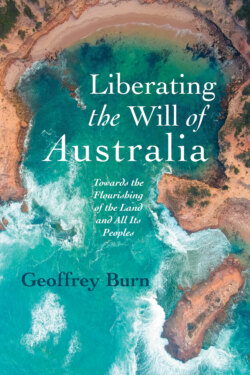Читать книгу Liberating the Will of Australia - Geoffrey Burn - Страница 11
На сайте Литреса книга снята с продажи.
ОглавлениеThe past is not dead and gone; it isn’t even past.16
White man, hear me! History, as nearly no one seems to know, is not merely something to be read. And it does not refer merely, or even principally, to the past. On the contrary, the great force of history comes from the fact that we carry it within us, are unconsciously controlled by it in many ways, and history is literally present in all that we do. It could scarcely be otherwise, since it is to history that we owe our frames of reference, our identities, and our aspirations. And it is with great pain and terror that one begins to realize this. In great pain and terror one begins to assess the history which has placed one where one is, and formed one’s point of view. In great pain and terror because, thereafter, one enters into battle with that historical creation, Oneself, and attempts to re-create oneself according to a principle more humane and more liberating: one begins the attempt to achieve a level of personal maturity and freedom which robs history of its tyrannical power, and also changes history.17
Today, we recognize that the ways in which our forebears treated the First Peoples was abhorrent, but we see ourselves as different. We see differently now and we think that we can draw a line under the past and proceed into the future with different practices that arise from our new understanding. It is certainly true that the culture is changing in Australia, but it is also true that policies and practices today continue to cause damage. Some problems are so complex that there seems to be no good option.18 To think that we can just draw a line under the past is a fatal mistake, because the ways of the past continue to shape us in the present and we are not always able to see clearly nor to know what is good. The result is that sometimes harm is done even when good is intended.
This First Movement, Binding, will introduce the theological concept of bound willing, which shows how our wills are shaped by our history, so that we cannot always choose what is good, even when we wish to do it. The will is bound because it is limited in its ability to respond more fully to the love of God, who is the source of all that is good, and to act from that place. This is true not only of individuals, but also of groups, societies and nations. The Second Movement, Loosing, will look at concrete practices which enable us to receive the liberating love of God, so allowing our wills to be set free from those things which bind them.
This use of Christian theology brings both explanatory and hortatory power: it both helps the situation to be understood and also shows what needs to be done in order to put it right. More than that, it is deeply hopeful, because, in God, there is external help to redeem the situation. This book is therefore not about apportioning blame but about being able to acknowledge the full depth of the pathology in the presence of God, which is liberating because God is always moving to towards the world in order to bring life; the movement of God is not towards blame and punishment but towards restoration.
The first section of this movement will introduce the concept of bound willing. Alistair McFadyen gives the best contemporary exploration of bound willing that I have come across, and I recommend reading his book for those who wish to explore these concepts in more detail.19 In his book, he uses two case studies—child sexual abuse and the Nazi holocaust—to explain, develop, and test the doctrine of bound willing and the nature of salvation, the liberating work of God to release us from all that binds us. These case studies, of traumatic and incomprehensible events, show both how theology gives both a deeper understanding of the dynamics of complex problems and also how release from these problems can come about. It is important to understand that I am not suggesting that the situation in Australia is like either of these case studies. Rather, understanding the underlying dynamics of these examples gives a new way of looking at what has happened in Australia since the coming of the first Europeans, which is key to understanding why harm continues to be done to the First Peoples in Australia, even when good is intended, as well as showing the way out of this continuing problem. The second case study is important because it helps us to shift our perspective from individualism to see the dynamics of how whole nations can become gripped and driven by forces of which they are not fully aware, where the individual is caught up in systems from which there seems to be no escape.
In the second section, these theological tools are used to read the biblical book of Ezekiel. It is a case study of how bound willing has been working itself out in a nation over many generations.
The final section in this movement will briefly look at the situation in Australia, giving further definition of what we have been calling the Root Sin, and also giving three simple case studies of how bound willing can help us to understand why things went wrong when good was intended.
The Intermezzo will give a much larger case study of the dynamics of bound willing, being an examination of The Land in court cases and legislation over a period of half a century.
